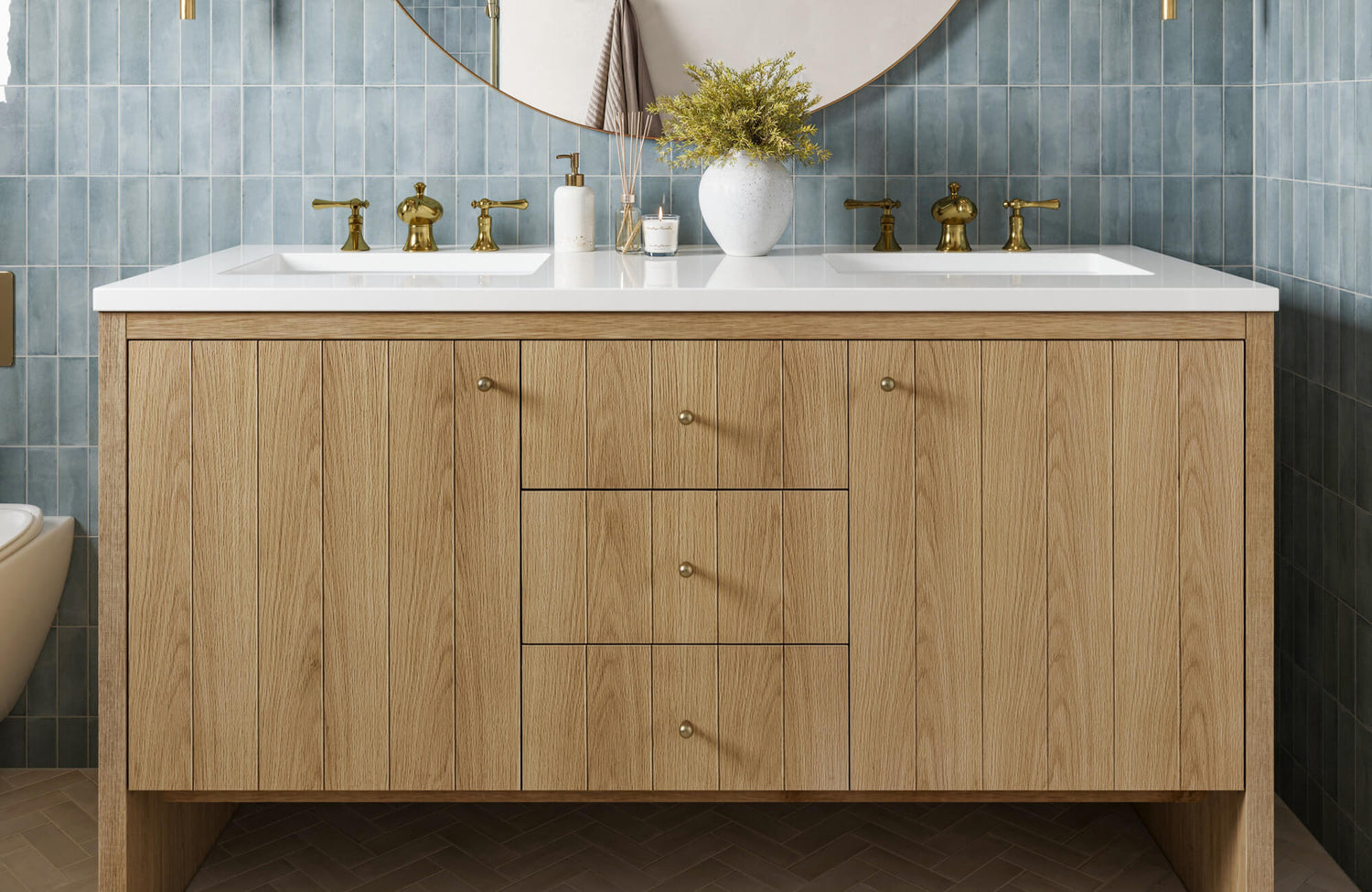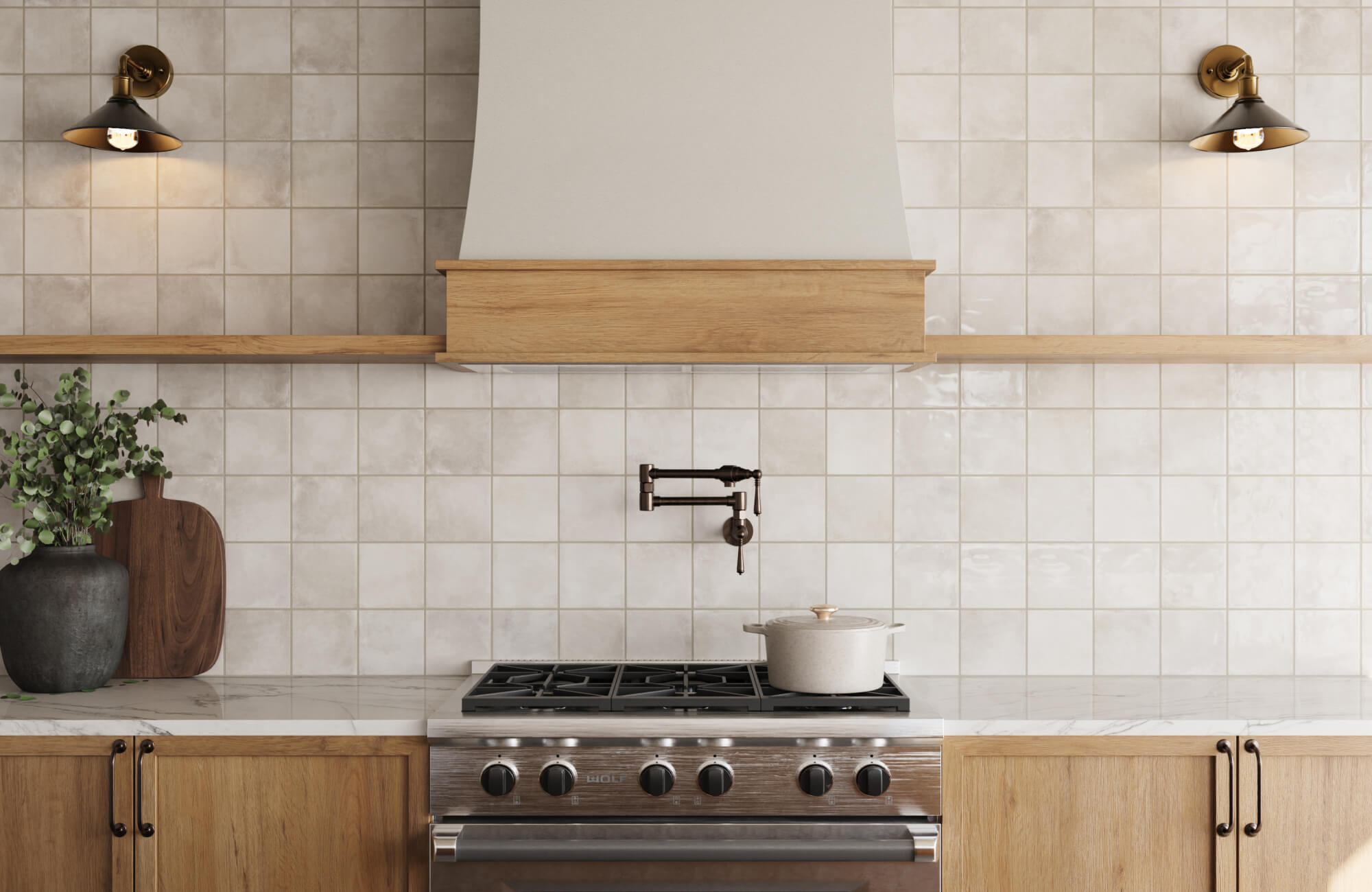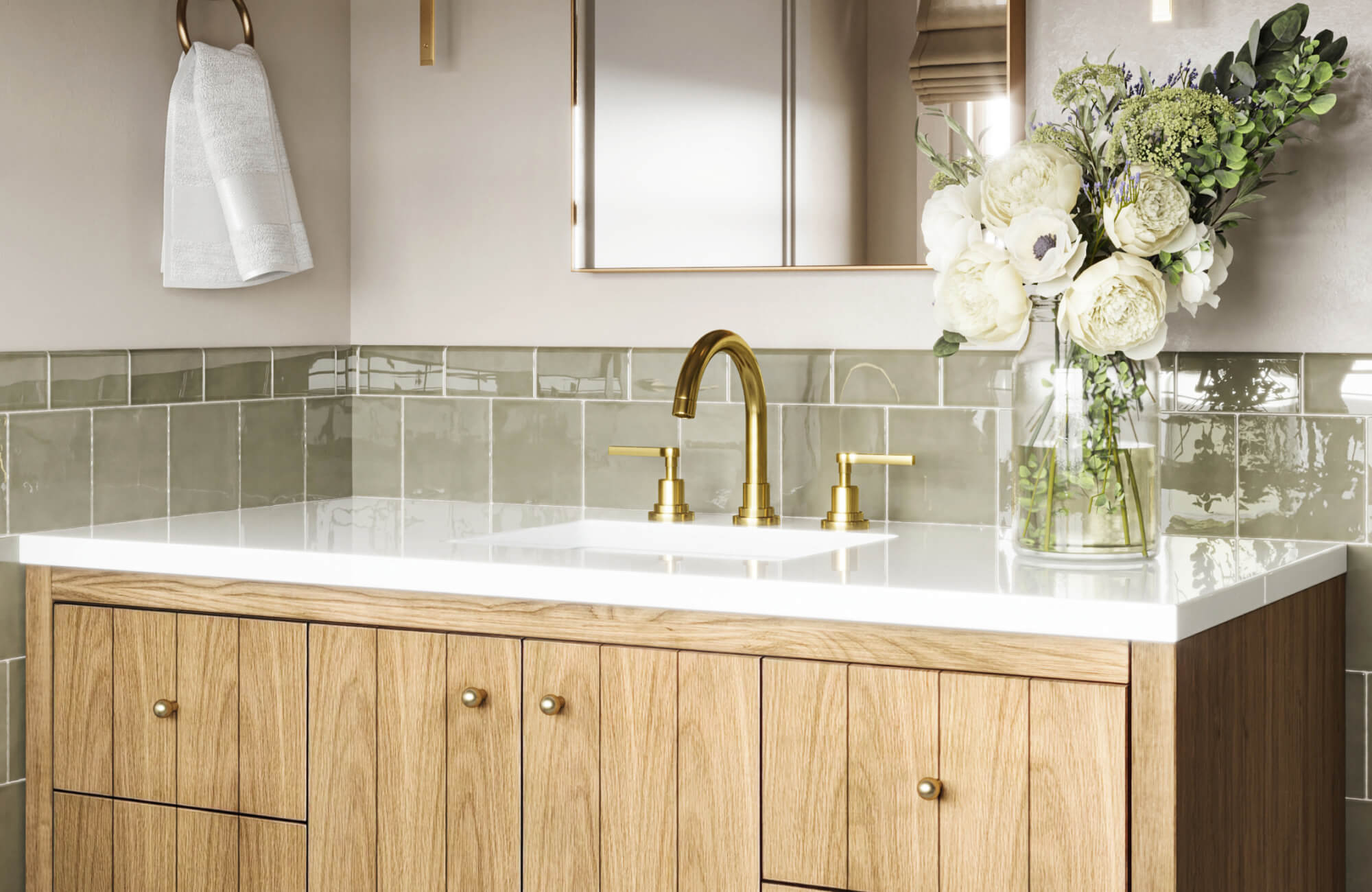Choosing the right bathroom vanity is more than just a design decision, it’s about creating a space that feels right for your everyday routine. From the style and size to the materials and sink setup, every element plays a role in how your bathroom looks, feels, and functions.
Whether you’re outfitting a compact powder room or planning a luxurious master bath, understanding your options can make all the difference. In this guide, we’ll walk you through the most popular vanity types, materials, and configurations to help you find the perfect match for both your space and your lifestyle.

How Bathroom Vanities Evolved Through History
Long before indoor plumbing became common, people relied on washstands, small tables or cabinets holding a basin and pitcher, for their daily grooming needs. These early vanities were often placed in bedrooms or dressing rooms and crafted from wood, sometimes featuring ornate designs that echoed the surrounding furniture. Their main purpose was function, but even then, a sense of aesthetic appeal quietly shaped their design.
As running water and indoor plumbing advanced in the late 19th and early 20th centuries, the washstand gradually moved into the bathroom. With built-in sinks and drainage, these pieces became more practical, streamlining daily routines. Storage was soon introduced, making it easier to tuck away essentials while keeping the space neat and efficient.
Today’s bathroom vanities, like our Demi 30" Single Vanity in Mid-Century Walnut with 3 cm White Zeus Quartz Top above, reflect that balance between history and modern living. Many still carry nods to traditional craftsmanship, like panel accents or warm wood tones, but they’ve evolved to include floating profiles, integrated sinks, and minimalist finishes. What started as a basic household fixture has become a design centerpiece that helps define both the look and flow of the bathroom.

Different Vanity Styles and How They Shape Your Space
How your vanity is built can make a big difference in how your bathroom feels day to day. It’s not just about holding a sink, your vanity’s structure shapes everything from how much storage you have to how open or grounded the space looks. Whether you're after something practical, minimal, or spa-like, the right frame can help you pull the whole room together.
Freestanding Vanities
Freestanding vanities are a classic for a reason. They rest directly on the floor, giving them a grounded, substantial feel that works well in both traditional and modern settings. You’ll often see them in remodels or rentals because they’re easy to install and don’t require wall mounting, plus, they pair seamlessly with existing plumbing setups.
They’re also a practical choice if storage matters. With full cabinetry underneath, you can easily stash away bathroom staples like towels or cleaning supplies. For example, in a master bathroom, a double freestanding vanity gives each person their own space without losing that cohesive, polished look.
Wall-Mounted (Floating) Vanities
If you’re leaning into a more streamlined or minimalist design, wall-mounted vanities (also known as floating vanities) can really open things up. Since they’re attached directly to the wall, as seen above with our Royce 36" Single Vanity in Chestnut with 3 cm White Zeus Quartz Top, they leave space underneath that makes smaller bathrooms feel bigger, and makes it easier to clean the floor, too.
They’re also highly customizable. You can install them at whatever height suits your needs, and they pair beautifully with bold features like vessel sinks or under-cabinet lighting. Just keep in mind they’ll need strong wall support, especially if you're using heavy materials or storing bulky items.
Corner Vanities
For tight or awkward layouts, corner vanities are a clever way to make use of every inch. They’re designed to fit snugly into corners, which helps free up the rest of the bathroom and keeps the room feeling open. In powder rooms or narrow guest baths, they offer function without the bulk.
Many designs also feature shallow depths or angled cabinets to take up as little room as possible. These small-space savers may not suit large, primary bathrooms, but they’re ideal when you need sink access in a limited layout without compromising on design.
Open Shelf Vanities
Open shelf vanities offer a fresh, breezy look that instantly gives your bathroom a relaxed, spa-inspired feel. Instead of solid cabinet doors, they feature exposed shelving, great for styling towels, woven baskets, or decorative jars in plain view.
They’re especially suited for casual or coastal-style bathrooms where a sense of flow and openness is part of the appeal. Also, with fewer heavy materials, they help smaller spaces breathe. Just be sure to stay organized, or consider pairing them with a nearby cabinet if you still need some concealed storage.

Choosing the Right Vanity Sink Setup for Your Needs
The type of sink your vanity includes plays a major role in how it functions day-to-day. Whether you're outfitting a solo powder room or designing for a shared family bathroom, the right sink setup impacts everything from storage to style. Below, we break down the most common setups to help you find the one that fits your layout and lifestyle best.
Single Sink Vanities
Single sink vanities are a solid pick for smaller bathrooms or spaces meant for one person. You’ll see them in everything from tiny corners to full-size freestanding styles, which makes them easy to fit into tight or mid-sized layouts. If you're updating a guest bath or designing a half bath, this type gives you just enough utility without crowding the room.
They also free up more counter space, something that comes in handy when paired with good built-in storage. You’ll often find models with deep drawers or accessible shelves that help keep your daily items organized. It’s a smart, space-conscious choice when you don’t need two sinks but still want style and function.
Double Sink Vanities
If more than one person is using the bathroom at the same time, a double vanity, such as our Elodie 72" Double Vanity in Light Natural Oak with 3 cm White Zeus Quartz Top above, can be a game changer. These are especially common in primary baths or shared family setups, giving each person their own space while still offering generous counter and cabinet storage. Add mirrors and proper lighting, and your morning routine becomes far more manageable.
Just remember that double vanities need more room to really work. For instance, squeezing one into a tight space can quickly make things feel cramped. It’s also important to factor in the plumbing and whether your layout can handle an extra set of connections before going all in.
Vessel Sink Vanities
Vessel sink vanities add instant personality to a bathroom. The bowl-like sinks sit above the counter, creating contrast and height that feels more like sculpture than utility. They're a favorite in modern or eclectic spaces, especially when paired with floating vanities or natural stone finishes that really let them shine.
Still, vessel sinks aren’t just for show. You’ll need to plan for splash control and make sure the faucet height and placement line up just right. They also take a bit more effort to clean around the base, so they’re better suited for design-forward bathrooms where function meets flair without too much daily mess.
Integrated Sink Vanities
With their sleek, seamless design, integrated sink vanities keep things simple and low-maintenance. The sink and counter are all one continuous surface, which not only looks modern but also makes cleanup easier since there are no seams for grime to collect. It’s an ideal fit if you want a tidy, minimalist look with less effort.
You’ll usually find these in durable materials like resin, porcelain, or solid surfaces that hold up well to everyday use. They're especially practical for guest bathrooms or rental spaces where you want everything to stay clean and cohesive with minimal upkeep. Plus, the all-in-one design makes them feel polished and well thought-out.

Finding the Right Vanity Size for Your Bathroom
Vanity size isn’t just about filling up wall space, it directly impacts how your bathroom feels and functions day to day. Whether you're working with a snug powder room or a spacious primary bath, the right width will help balance movement, storage, and comfort. Below, we’ve outlined the most common sizes so you can find the right fit for your space and routine.
20" Vanities
Ideal for compact spaces, 20-inch vanities are a go-to for powder rooms or tiny guest baths. They provide just enough room for handwashing and a few daily basics without overwhelming the layout. Because of their size, they’re often designed with vertical storage or slim silhouettes that help keep corners open and uncluttered. These vanities work best in spaces that see occasional use rather than full-time routines. If you’re designing for an apartment, secondary bath, or a room with tricky dimensions, a 20" vanity keeps things simple and tidy without eating up precious floor space.
24" Vanities
At 24 inches wide, vanities begin to offer a bit more functionality while still staying compact. They’re popular in half baths or guest bathrooms, where space-saving is important, but you still want something that looks intentional and well-designed. For example, a floating 24" vanity paired with a bold vessel sink can make a stylish statement without taking over. They’re also a solid choice when plumbing or wall clearances limit your options. You get enough surface space for a few essentials while keeping the overall feel light and open.
30" Vanities
If you want a bit more breathing room, a 30-inch vanity offers extra counter space and added storage without losing that space-smart profile. It’s a great middle ground for full bathrooms where you need both functionality and a bit of design freedom. You’ll often find models at this size with a combination of drawers and cabinet storage, perfect for keeping clutter tucked away. Plus, this width opens up a wider range of sink styles, like integrated or undermount options, giving you flexibility with both look and layout.
36" Vanities
As one of the most commonly used sizes, 36-inch vanities strike a strong balance between form and function. They're wide enough to support one user’s daily routine with ease, yet compact enough for apartments or mid-sized homes. This size typically offers generous storage, comfortable countertop space, and versatile styling across everything from modern to transitional designs. If you’re unsure where to start, a 36" vanity is often a reliable, well-rounded choice.
48" Vanities
A 48-inch vanity is great for when you want more room to spread out but don’t quite need two sinks. It gives you a little more luxury, think space for styling tools, organizers, or decorative touches, without overwhelming the room. This size works well in main bathrooms used by individuals or couples who want more storage without going double. Many designs at this width include extra drawers or creative shelving layouts that improve functionality while keeping things feeling balanced.
55" Vanities
Sitting between more standard sizes, 55-inch vanities are perfect for bathrooms that feel too cramped for 60 inches but need more than a 48" can offer. As seen above with our Maxine 55" Single Vanity in Washed Natural Veneer with Carrara Marble Top, they provide ample surface area and often include clever configurations like offset sinks or central drawers. If your layout needs a bit more breathing room while still offering practical storage and counter space, this size delivers a smart, flexible solution. It’s ideal for moderately sized bathrooms where every inch counts.
60" Vanities
At 60 inches, you’re entering double-sink territory, making this a favorite for shared bathrooms and busy households. Whether you go for dual sinks or a wide single, this size gives you space to get ready side by side or simply spread out your essentials. Designs at this size often offer symmetry, with balanced cabinet and drawer arrangements that feel intentional and functional. It’s a great fit for primary baths, giving you style, storage, and a layout that supports everyday use.
72" Vanities
For large master bathrooms, a 72-inch vanity brings both elegance and practicality in full. With room for double sinks, long countertops, and deep storage, it’s built to support two users without compromise. Many vanities at this size also include custom features like makeup stations or open shelving for towels. Beyond the functionality, a 72" piece can become a true focal point, anchoring your bathroom with a sense of luxury and ease.
Choosing the Right Material for Your Bathroom Vanity
What your vanity is made of affects everything from daily durability to long-term maintenance. Some materials handle moisture and wear better than others, making it worth knowing your options. Below, we highlight the most common choices to help you find one that fits your bathroom and lifestyle.
Solid Wood Vanities
Solid wood vanities, made from materials like oak, maple, or teak, offer natural strength and timeless appeal. Each piece carries unique wood grain and texture, adding warmth and authenticity to your bathroom’s design. These vanities tend to be heavier and sturdier than engineered options, with a lifespan that can easily stretch across decades when well maintained.
However, solid wood can expand or contract with humidity changes, which makes sealing and ventilation important. In moisture-prone bathrooms, choosing hardwoods like teak or opting for protective finishes can help prevent warping or cracking. If you’re looking for a rich, furniture-style feel that adds value and character, solid wood is a solid investment.
MDF and Plywood Vanities
Medium-density fiberboard (MDF) and plywood are engineered wood products commonly used in modern vanities. MDF is made from compressed wood fibers and creates a smooth, even surface that’s perfect for painted or lacquered finishes. It’s more affordable than solid wood and offers consistent results, especially in styles with bold colors or clean lines.
Plywood, on the other hand, is made by layering thin wood sheets with adhesives, resulting in a strong, durable material that resists warping better than solid wood. While it’s typically more expensive than MDF, it also handles weight and moisture better, especially in structural elements. Both options are practical for budget-friendly or rental-friendly upgrades that still deliver a polished appearance.
Metal and Industrial Vanities
Metal vanities, often crafted from stainless steel, aluminum, or powder-coated iron, are prized for their strength and resilience. They naturally resist moisture, dents, and mold, making them excellent in humid environments or for bathrooms that see heavy use. Their clean, functional lines lend themselves well to industrial, minimalist, or urban-style interiors.
Some metal vanities feature open shelving or integrated sinks, while others mix metal with wood or glass for a softer, mixed-material look. They’re typically lower maintenance than wood and don’t require sealing, though fingerprints and water spots may show depending on the finish. If you’re drawn to durable materials with a sleek or edgy design language, metal vanities offer both style and strength.
Reclaimed and Sustainable Materials
For those who prioritize sustainability, vanities made from reclaimed wood, bamboo, or recycled materials offer a thoughtful, eco-friendly choice. Reclaimed wood vanities often feature rich character, including knots, patina, and wear that tell a story and bring warmth to your space. These vanities are often handmade or small-batch, giving them a custom-crafted appeal.
Bamboo is another sustainable option, technically a grass; it's fast-growing, highly renewable, and surprisingly water-resistant. These materials are ideal for environmentally conscious homes or designs that aim to feel natural and grounded. While upkeep can vary depending on the finish, sustainable vanities often come with quality construction and a feel-good story behind them.
Making the Right Choice for Your Bathroom
Choosing the right bathroom vanity isn’t just about finding something that fits, it’s about selecting a piece that reflects your style, supports your daily routine, and holds up over time. Whether you're working with limited space or designing a spacious master bath, every decision, from structure and size to material, plays a role in how your bathroom looks and functions.
If you're still weighing your options or want help refining your vision, our professional design consultation can offer clarity. With expert input on layout, materials, and finishes, you can confidently select a vanity that ties your whole space together while avoiding costly missteps.









